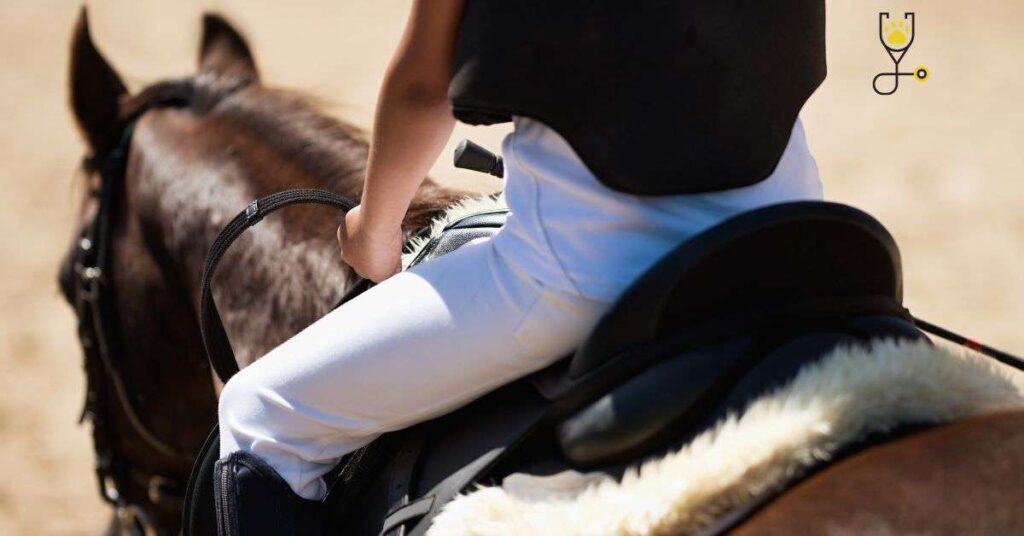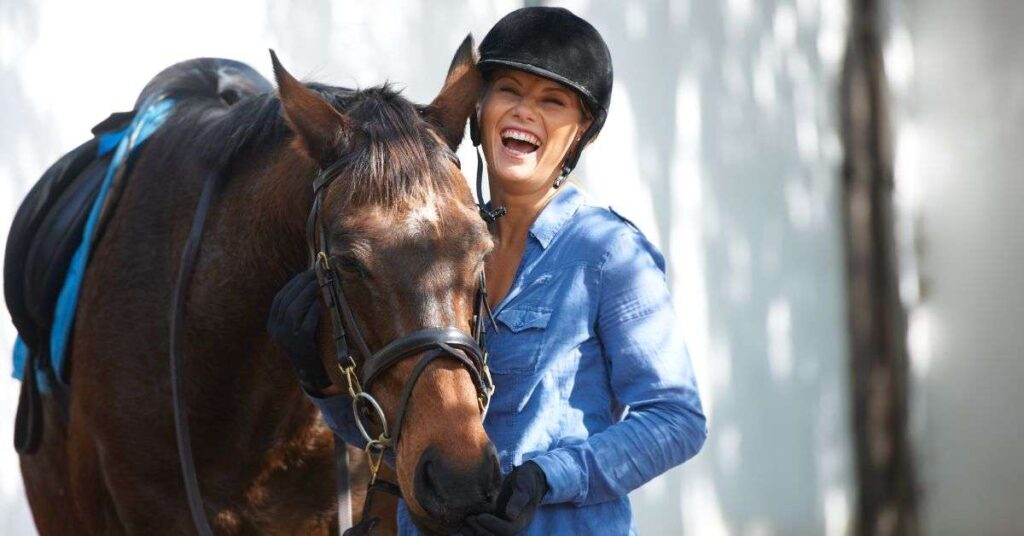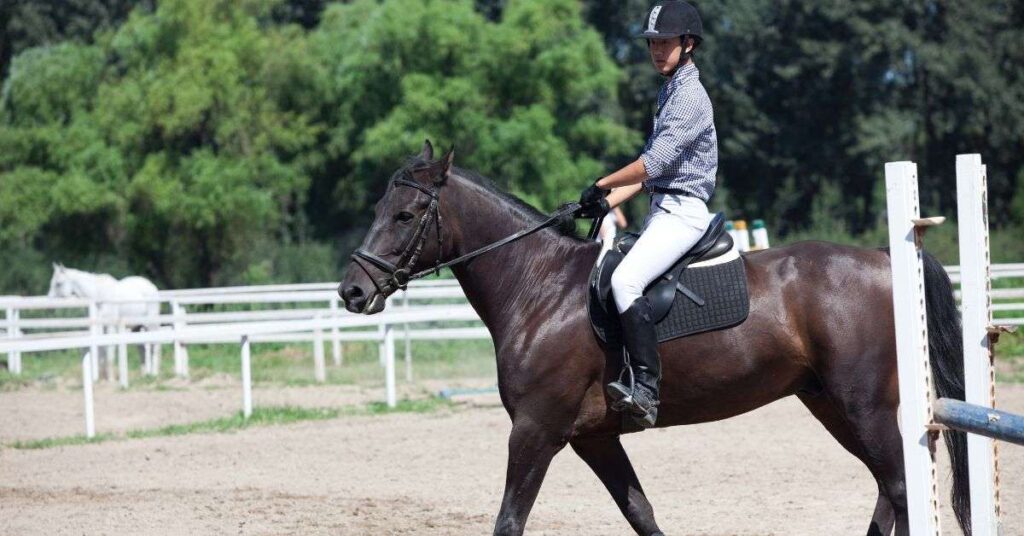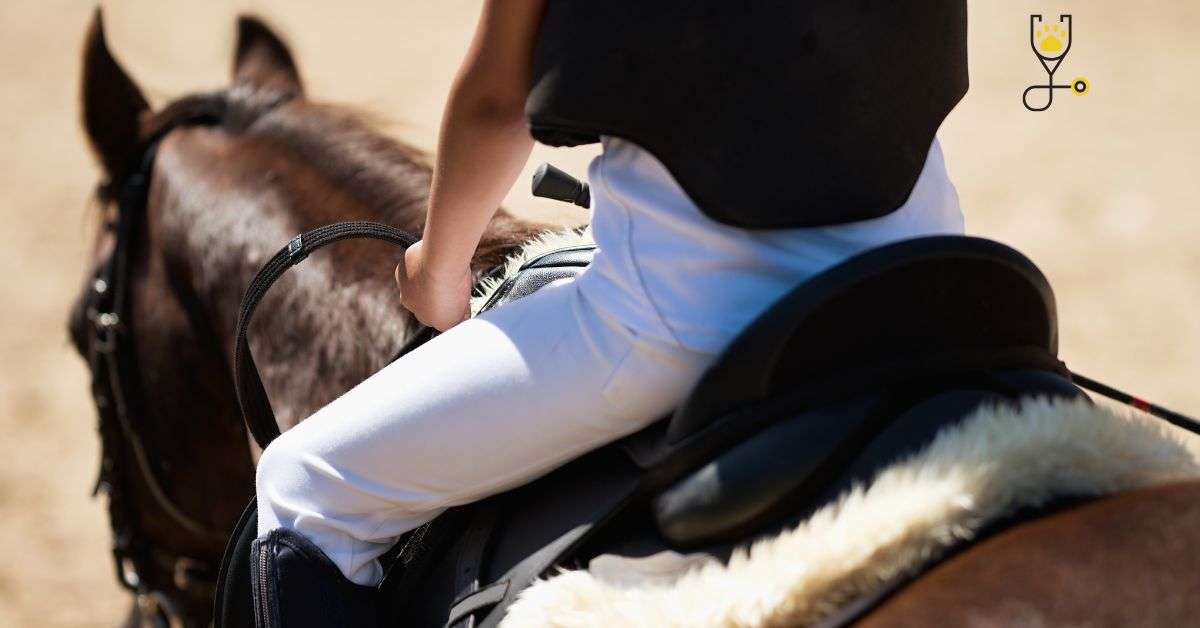When it comes to horse training, there are a number of different tools that can be used. One such tool is a riding crop or whip. While they may seem simple, these tools can be quite effective in getting your point across to your horse. In this blog post, we’ll take a closer look at riding crops and whips and discuss the different types that are available. We’ll also talk about when and how you should use them for the best results. So if you’re interested in learning more about these tools, keep reading!

How Do You Use a Whip on a Horse?
There are a few different ways that you can use a whip on a horse. The most common way is to tap the horse lightly on the flank or shoulder. This lets the horse know that you’re there and that you mean business. It’s also a good way to get the horse’s attention if it’s not paying attention to you.
Another way to use a whip is to give the horse a light smack on the rump. This is usually done when the horse is not moving forward as you want it to. A light smack will usually get the horse moving again.
Finally, you can also use the whip to make noise. This can be useful if you’re trying to startle the horse or get its attention.
Learn More About Horse: The Ultimate Guide To Ownership & Care
What Is a Riding Crop?
A riding crop is a type of whip that is specifically designed for horseback riding. It’s usually shorter than a regular whip, and it has a thicker handle that is easy to grip. The crop is also usually made of leather or another sturdy material.
Riding crops are used in much the same way as regular whips. The main difference is that they’re shorter, so you can’t reach the horse as easily with them. This means that you have to be more careful when using a crop, so you don’t accidentally hit the horse in the face or eyes.
Read More: How to Gentle Break a Horse for Riding
The Show Cane
The show cane is a type of riding crop that is often used in horse shows. It’s similar to a regular riding crop, but it’s longer and thinner. Show canes are usually made of wood or metal, and they’re often decorated with ribbons or other embellishments.
Show canes are used in the same way as regular crops. The main difference is that they’re longer, so you can reach the horse more easily with them. This makes them ideal for horses that are resistant to being tapped with a crop.
The Bat
The bat is a type of whip that is similar to a riding crop, but it has a flat surface instead of a point. Bats are usually made of wood or leather, and they’re often used in horse training.
Bats are used in much the same way as crops. The main difference is that they have a flat surface, so you can’t accidentally poke the horse in the eye with them. This makes them ideal for horses that are resistant to being tapped with a crop.

The Lunge Whip
The lunge whip is a type of whip that is specifically designed for lunging horses. It’s longer than a regular whip, and it has a handle that is easy to grip. Lunge whips are usually made of leather or another sturdy material.
Lunge whips are used in much the same way as regular whips. The main difference is that they’re longer, so you can reach the horse more easily with them. This makes them ideal for horses that are resistant to being tapped with a crop.
The Dressage Whip
The dressage whip is a type of riding crop that is specifically designed for dressage. It’s usually shorter than a regular whip, and it has a thinner handle that is easy to grip. Dressage whips are usually made of leather or another sturdy material.
Dressage whips are used in much the same way as regular crops. The main difference is that they’re shorter, so you can’t reach the horse as easily with them. This means that you have to be more careful when using a dressage whip, so you don’t accidentally hit the horse in the face or eyes.
Read More: How to Stop a Horse From Bucking
Final Thought
As you can see, there are a variety of different types of riding crops and whips that you can use when riding your horse. Each one has its own specific purpose, so be sure to choose the right one for the job. And always be careful when using any type of whip, so you don’t accidentally hurt your horse.

FAQs Regarding Whips and Crops
Q: Can I use a riding crop on my horse’s face?
A: No, you shouldn’t use a riding crop on your horse’s face. This could hurt the horse or cause it to startle.
Q: Can I use a whip to get my horse to move forward?
A: Yes, you can use a whip to get your horse to move forward. Just be sure to tap the horse lightly on the rump, so you don’t accidentally hurt it.
Q: What is the difference between a riding crop and a lunge whip?
A: The main difference between a riding crop and a lunge whip is that lunge whips are longer, so they’re better for reaching horses that are farther away.
Learn More: How to Stop Your Horse From Biting
Q: Can I use a dressage whip on my horse’s face?
A: No, you shouldn’t use a dressage whip on your horse’s face. This could hurt the horse or cause it to startle.
Q: What is the difference between a riding crop and a bat?
A: The main difference between a riding crop and a bat is that bats have a flat surface, so you can’t accidentally poke the horse in the eye with them.




